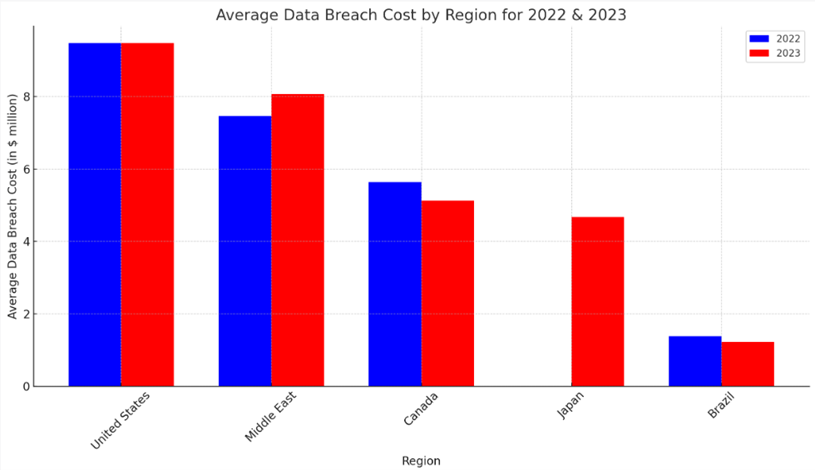
Scattered Spider: The Social Engineers Exploiting Human Trust at Scale
While many groups adapt to the changing cybersecurity terrain, Scattered Spider has taken the lead, redefining disruption as both a

In today’s digital age, data is often referred to as the ‘new gold’. However, just as gold needs to be safeguarded, so does data. The 2023 Cost of a Data Breach Report has unveiled some fascinating insights into how organizations, based on their size, are grappling with the financial consequences of data breaches. This blog provides a deep dive into these findings, shedding light on the vulnerabilities of smaller organizations and the resilience of their larger counterparts.
Organizations with fewer than 500 Employees
Year 2022
Year 2023
Smaller organizations have seen an increase in the number of breaches and the average records compromised per breach, suggesting they are being targeted more frequently and with more sophisticated attacks.
Mid-sized Organizations (500-1,000 Employees)
Year 2022
Year 2023
Mid-sized organizations, despite having a larger employee base than small organizations, have a higher cost per compromised record. This could be due to a lack of advanced cybersecurity measures or larger datasets being targeted.
Larger Entities (1,001-5,000 Employees)
Year 2022
Year 2023
Larger entities, with the broadest employee base, face challenges in maintaining consistent security protocols across various departments and locations, leading to a higher number of compromised records.
Both brackets of organizations have shown a discernible trend of proactive measures leading to a reduction in breach costs. This underscores the importance of continued investment and emphasis on cybersecurity measures in an ever-evolving threat landscape.
While larger organizations possess more data, their resources and proactive strategies seem to buffer them against the soaring costs of breaches.
The findings suggest that it's not just the smaller players at risk. Medium size entities, with up to 5,000 employees, are witnessing escalating data breach-related expenses.
These revelations underscore the pressing need for smaller firms to bolster their cybersecurity efforts. Despite budgetary limitations, the escalating costs of breaches necessitate investments in both security infrastructure and employee training.
” The cost dynamics of data breaches are influenced by a myriad of factors, including regional landscapes, regulatory stipulations, technological adoption, and the overall awareness of cybersecurity.”

But what do these numbers truly entail – QUESTIONS ⁉ I am happy to share light to some of the questions.
With the evident financial strains on smaller firms, what measures can organizations like early startups or with limited resources adopt to mitigate the escalating costs of data breaches?
Remember, the key is to start small and prioritize. Even the most basic security measures can drastically reduce the risk of a data breach. As the business grows and revenue increases, organizations can then consider allocating more funds towards enhancing their cybersecurity infrastructure.
In conclusion, The “Data Breach Costs 2023” report underscores a pivotal shift in the cybersecurity landscape. While larger organizations have long been the primary targets for cyber threats, the current data shows that smaller entities are now bearing a disproportionately heavy financial burden post-breach. This trend is not just a wake-up call for small and medium-sized enterprises but also a stark reminder for all businesses about the invaluable worth of data in today’s digital economy.
As data continues to be likened to gold, it’s imperative for organizations, irrespective of their size, to invest in robust cybersecurity measures. The future of an organization may very well hinge on its ability to safeguard its most precious digital assets.

IT Analyst & Cybersecurity Researcher
Metromax Solutions

While many groups adapt to the changing cybersecurity terrain, Scattered Spider has taken the lead, redefining disruption as both a
Not Every Battle Makes Headlines, But Every Business Is Fighting One Behind every login, every transaction, and every shared file,
The humble web browser is undergoing a dramatic transformation. What was once a static window to the internet is now
Leave your details below and get your free Thought Paper
Leave your details below and get your free Thought Paper